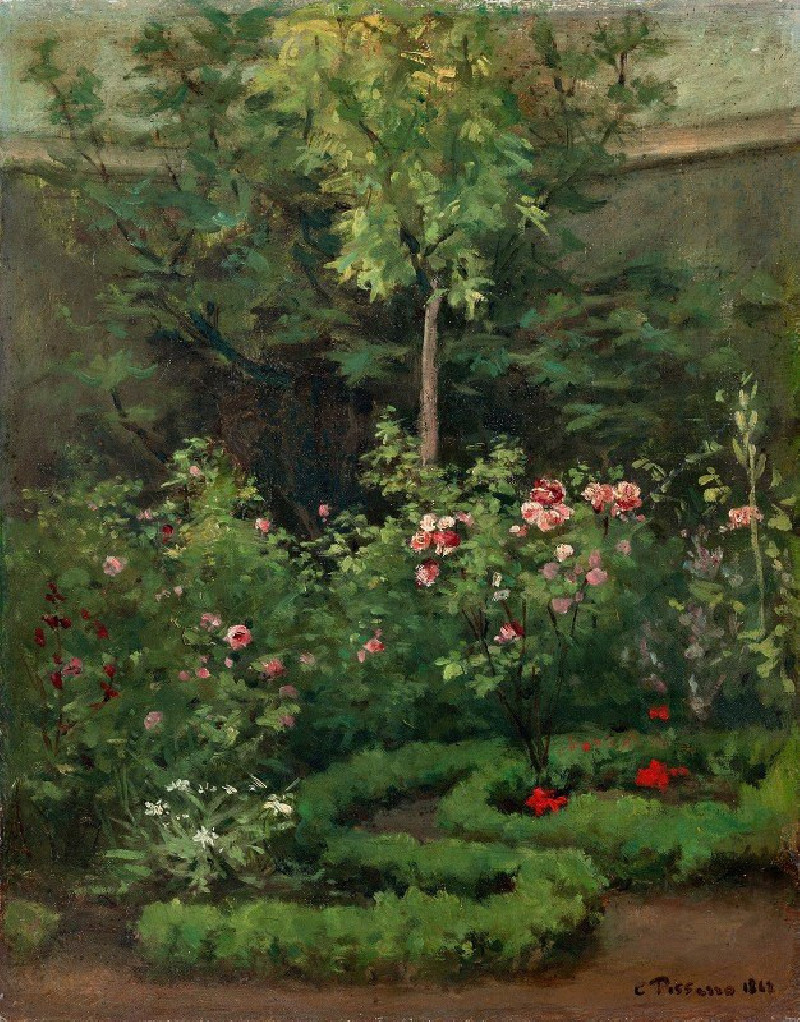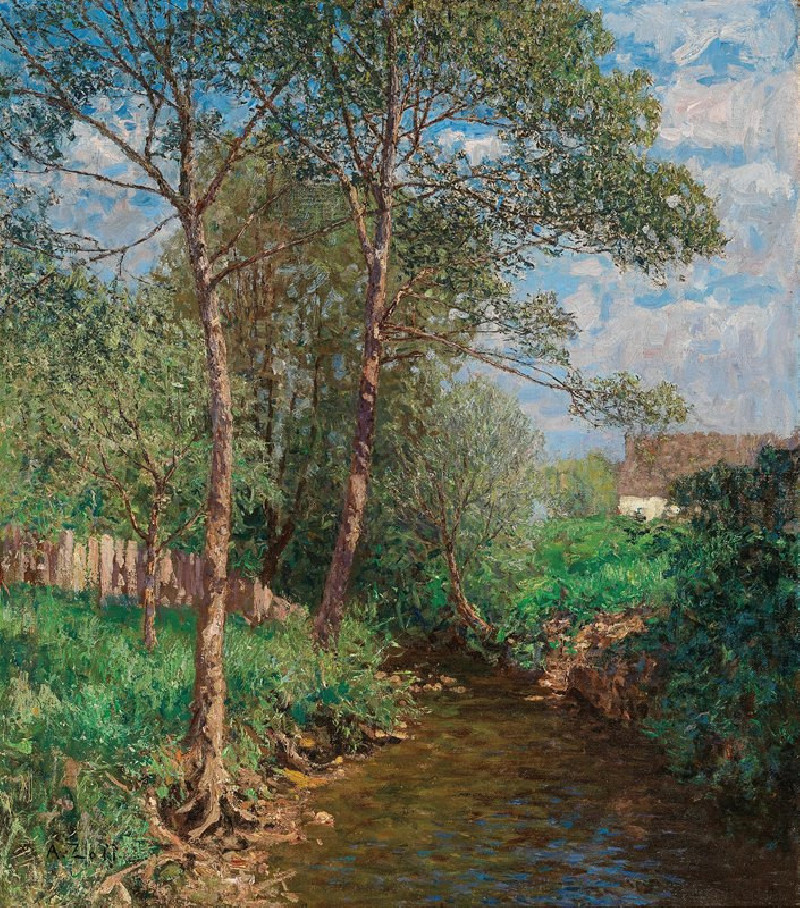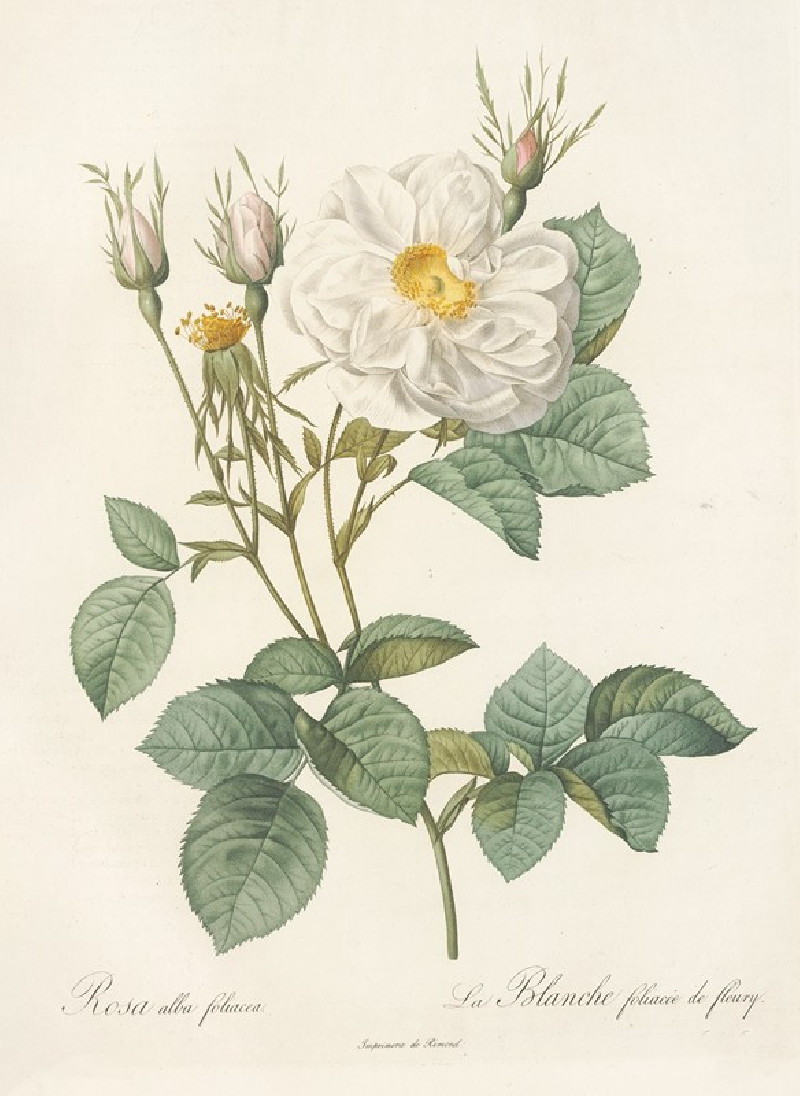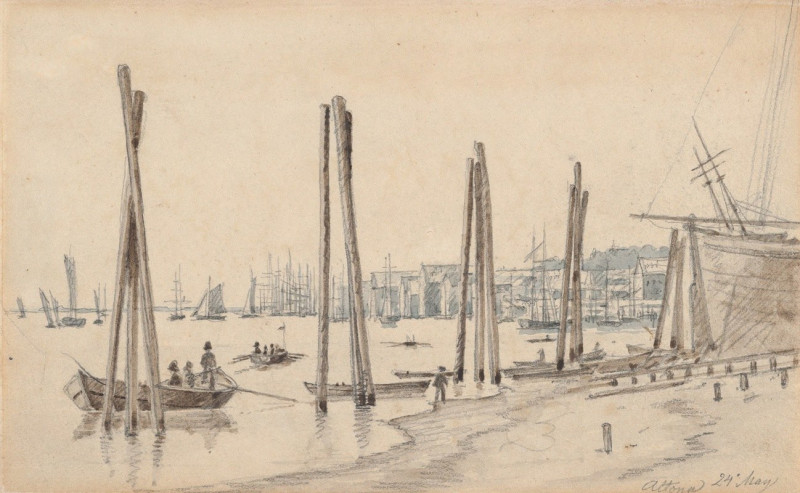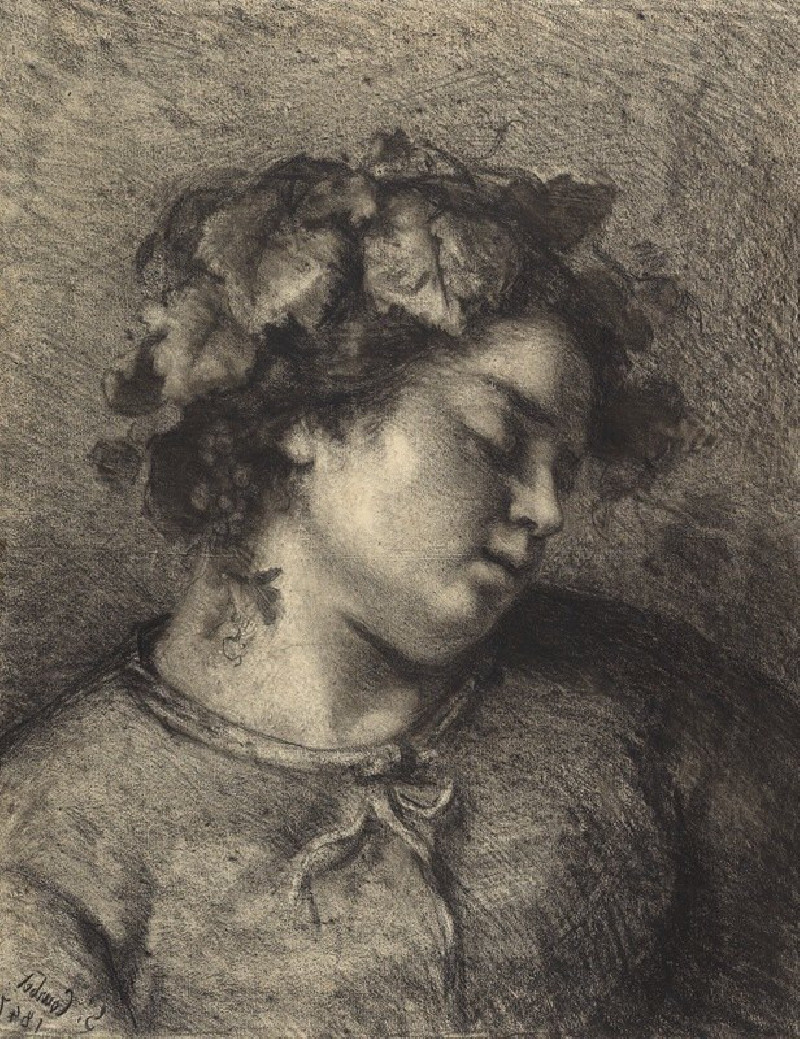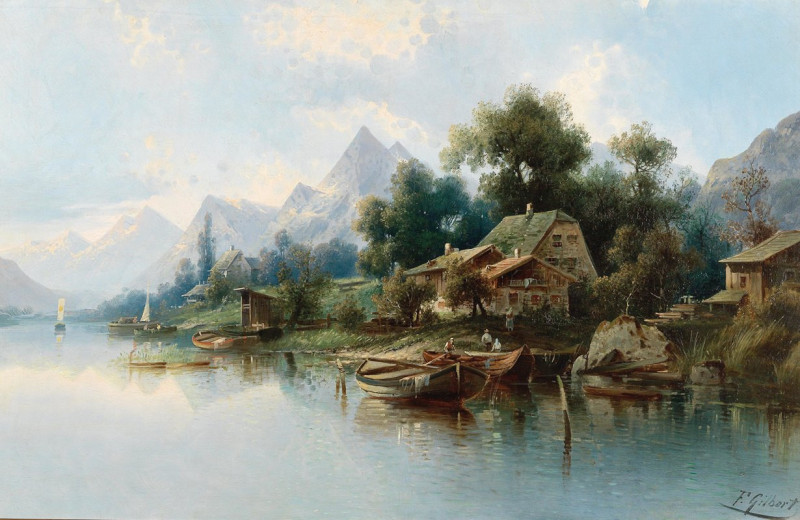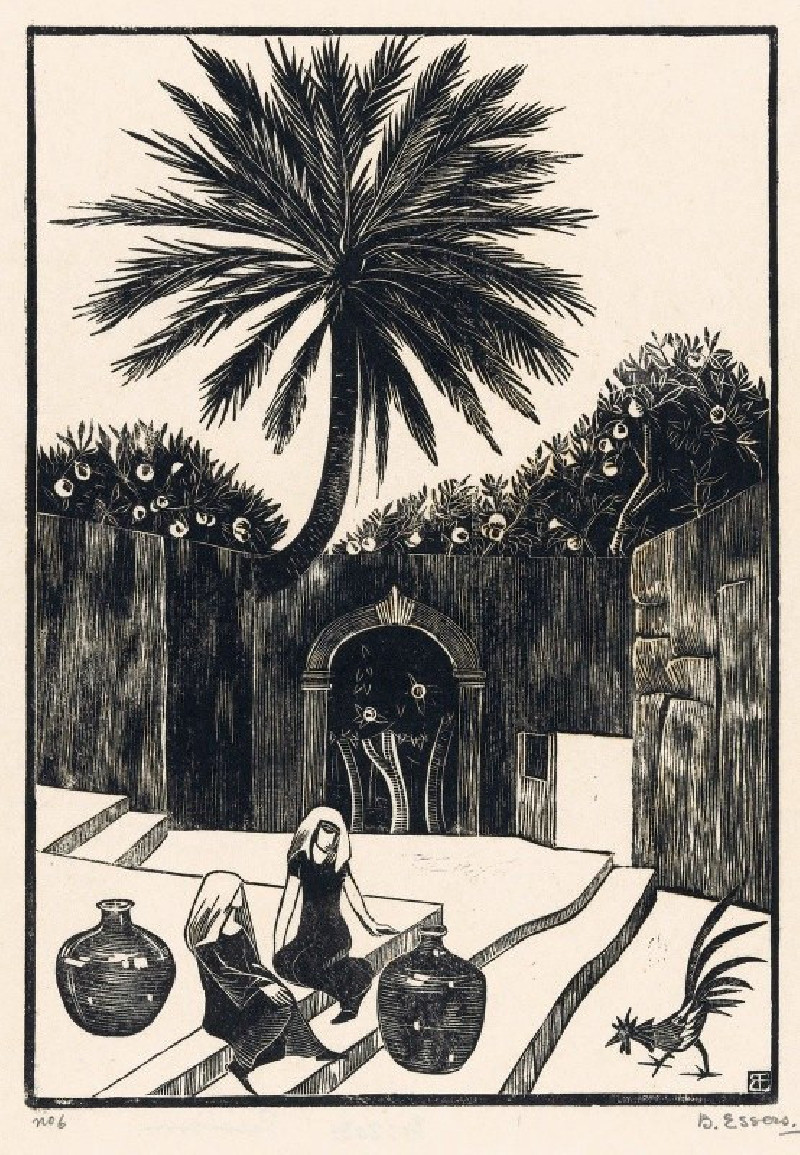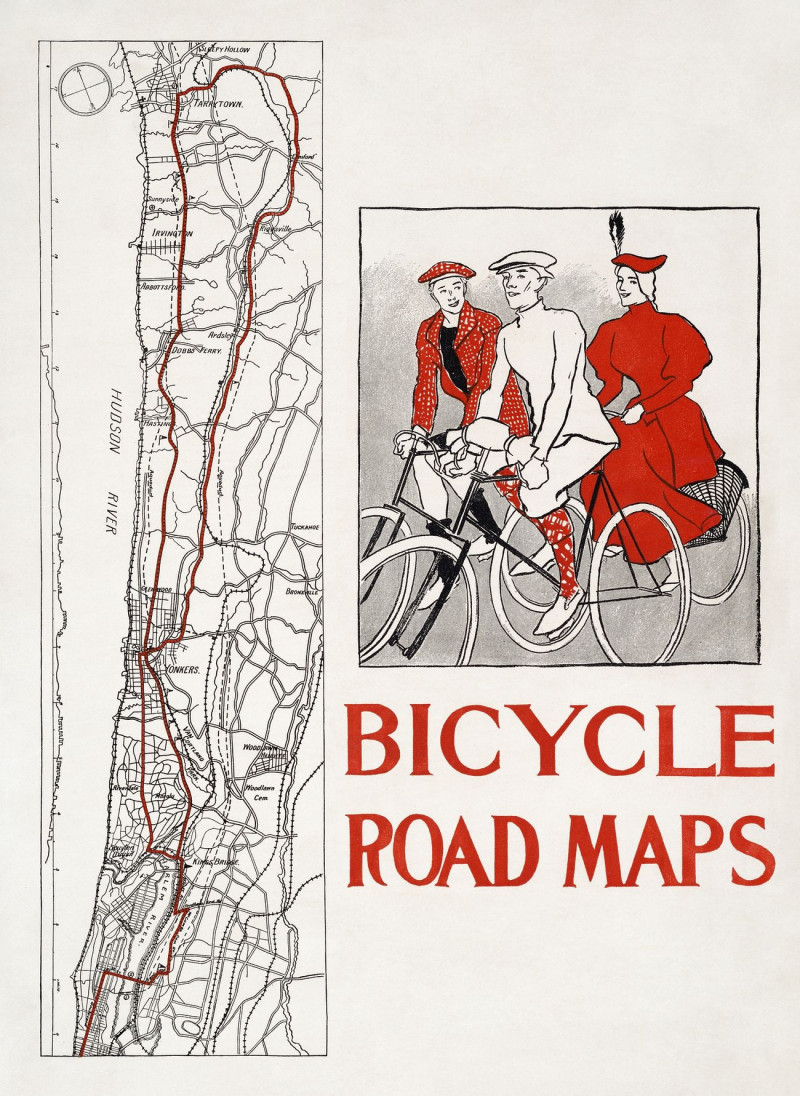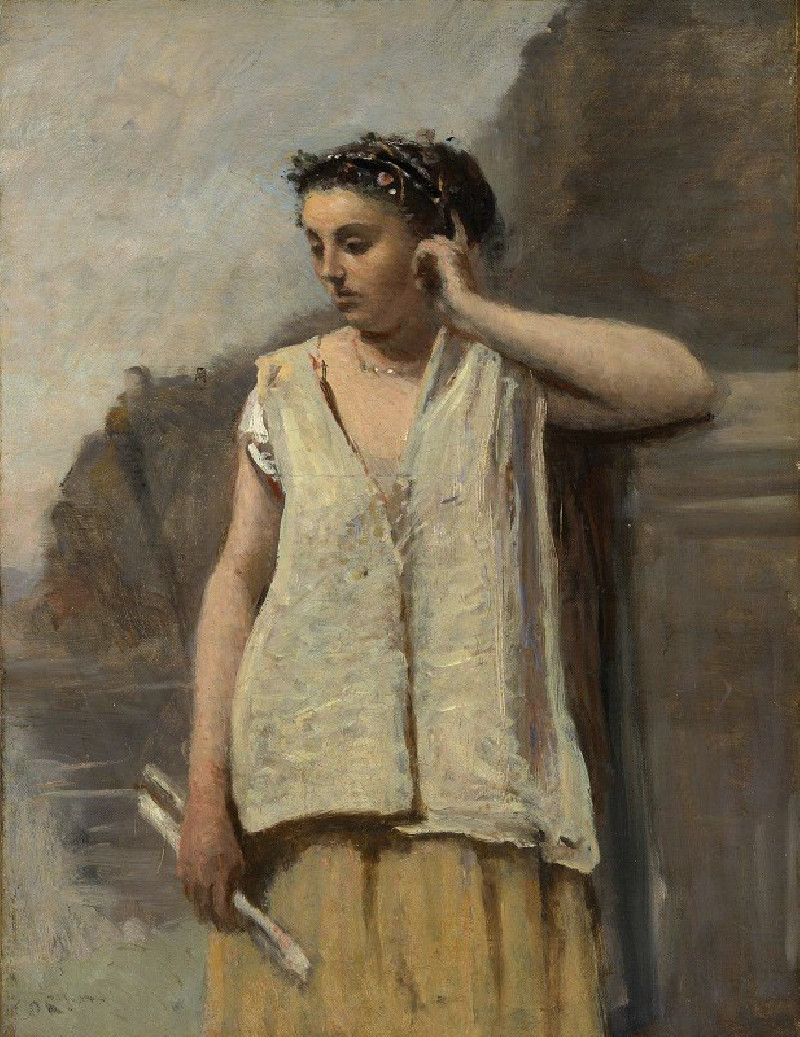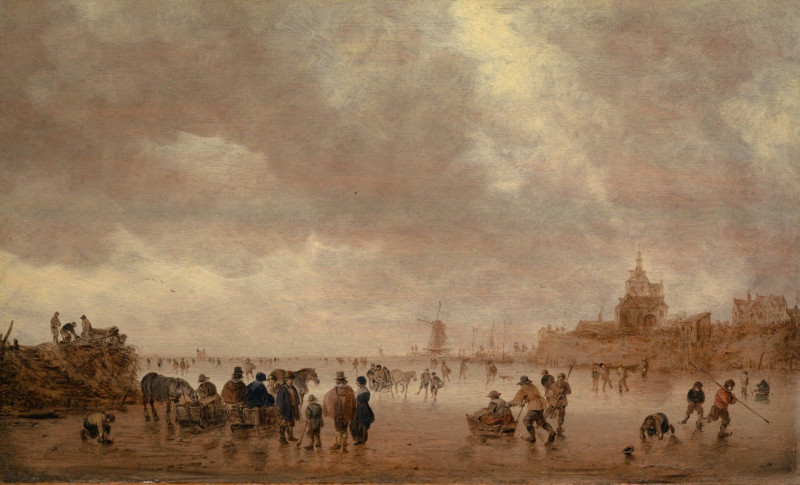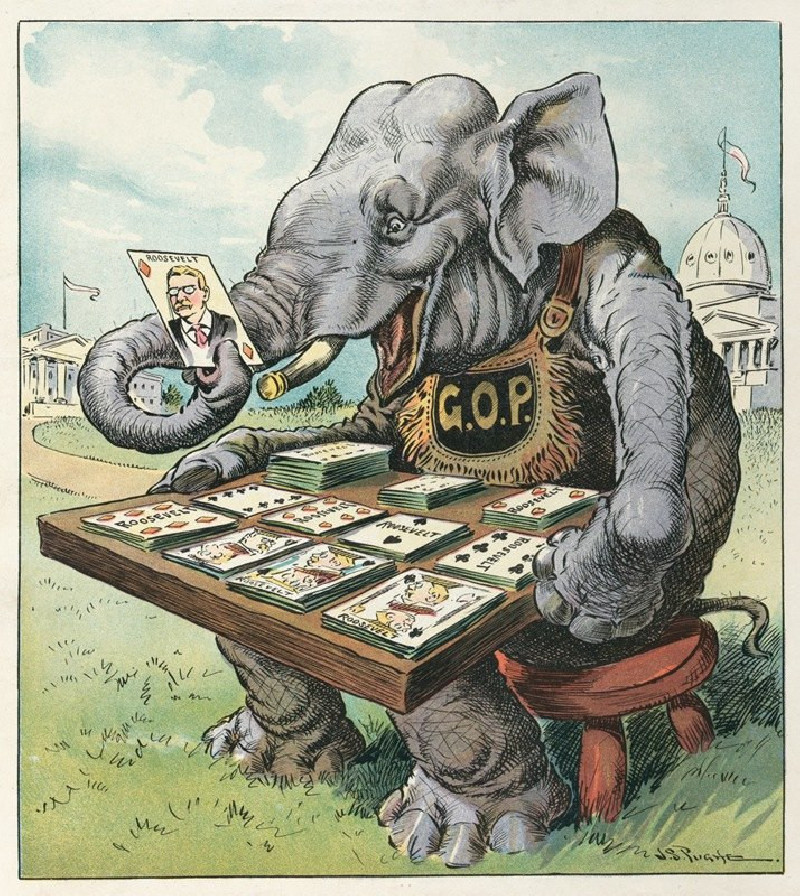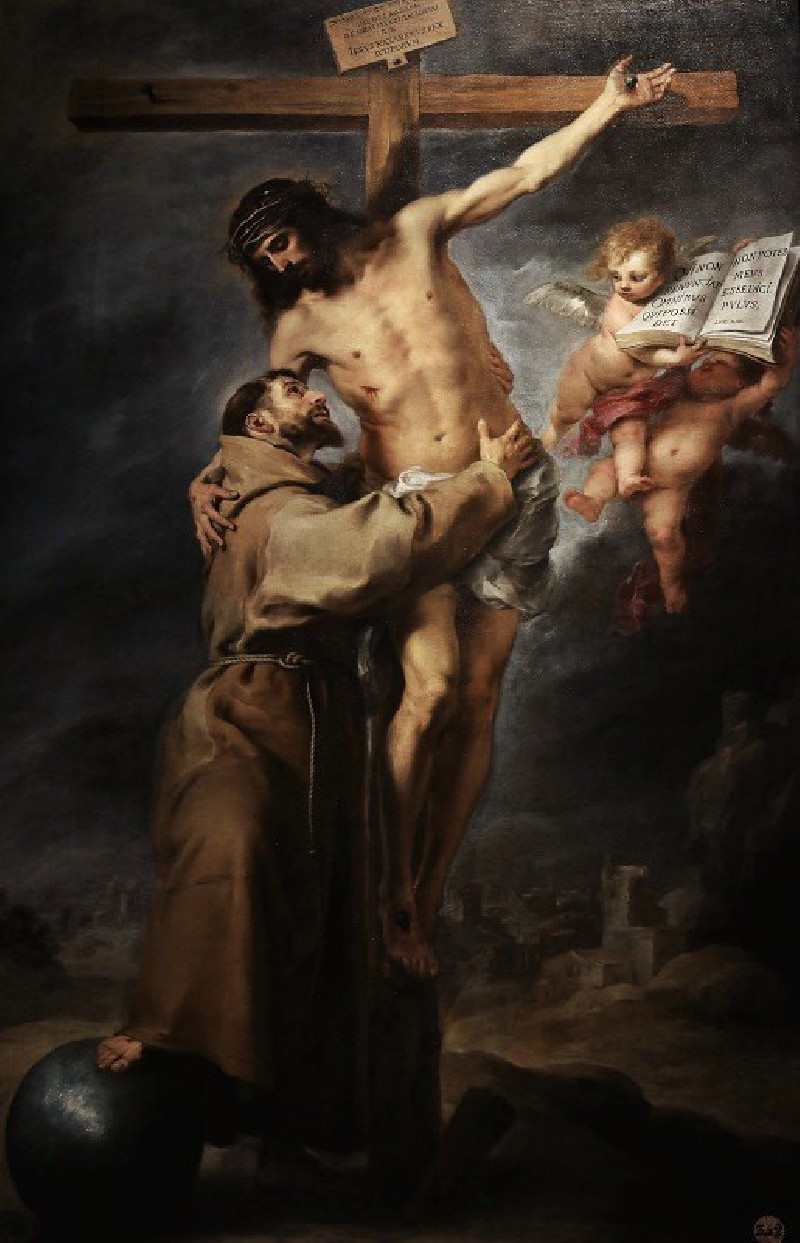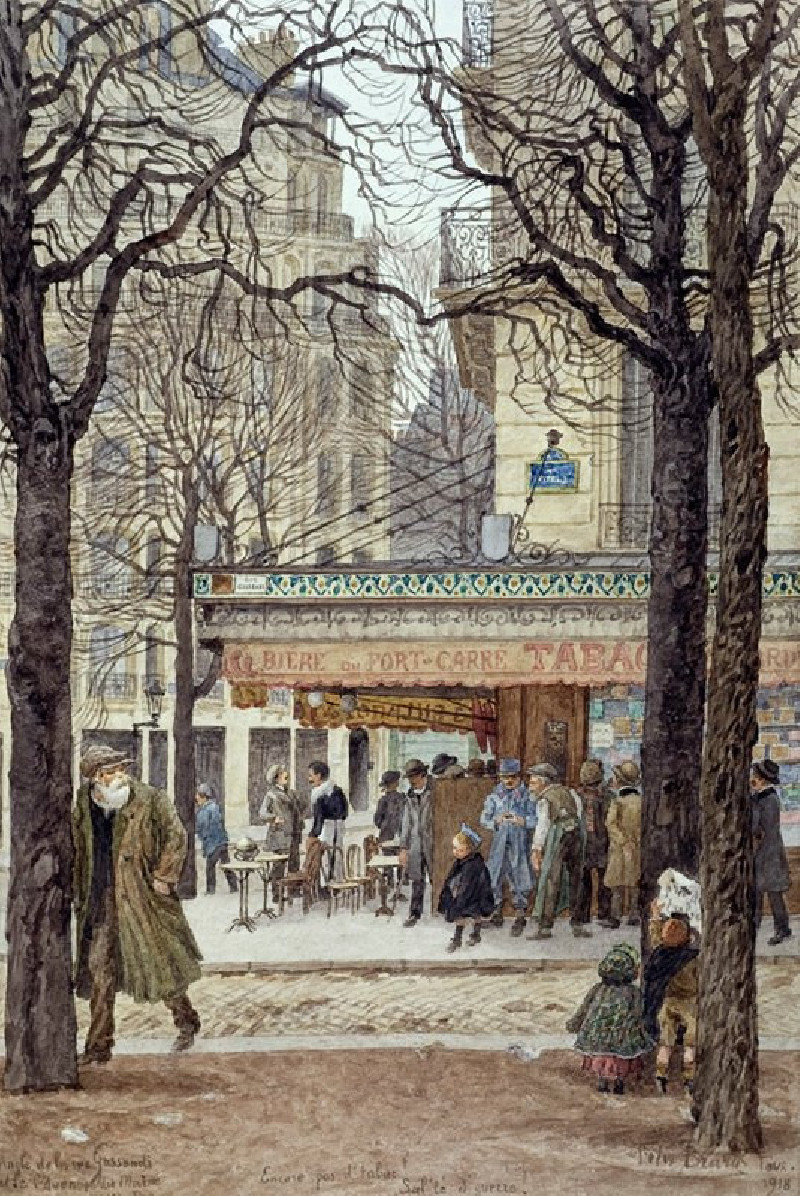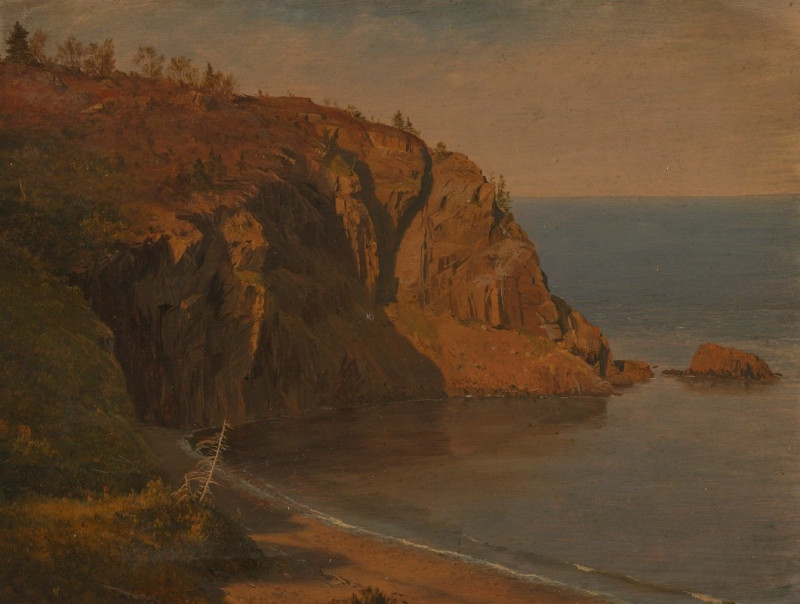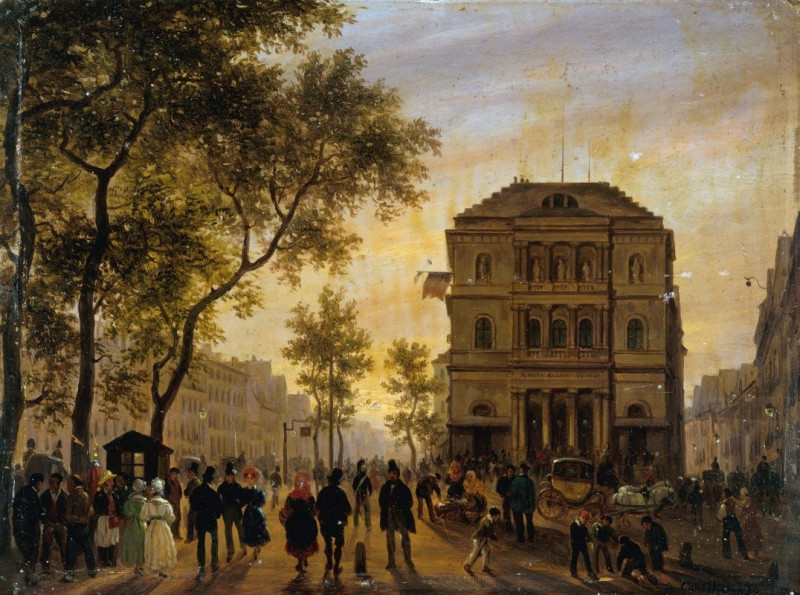A Rose Garden (1862)
Technique: Giclée quality print
Recommended by our customers
More about this artwork
We are delighted to present "A Rose Garden," a captivating painting by Camille Pissarro, crafted in 1862. This masterpiece invites viewers into a tranquil rose garden, where the interplay of natural light and shadow dances across lush greenery, imbuing the scene with a quiet, almost ethereal quality.At the heart of the painting, clusters of blooming roses in various shades of pink and red draw the eye, contrasting subtly against the rich greens of the foliage. Pissarro's skillful use of color and brushwork creates a dynamic yet serene atmosphere that captures the essence of a secluded garden. Small white flowers nestled in the undergrowth add a touch of purity and variety, enriching the visual texture of the composition.The central tree, with its robust trunk and dappled sunlight filtering through its leaves, stands as a testament to the resilience and enduring beauty of nature. This natural element not only adds depth to the painting but also serves as a symbol of strength and growth."A Rose Garden" is not just a visual delight; it is a reminder of the peaceful solitude and rejuvenating power of nature. It reflects Pissarro's deep connection to natural landscapes and his mastery in portraying the subtle complexities of outdoor environments.This painting is a beautiful example of Pissarro's early work, showcasing his evolving style and his contributions to landscape painting. It invites viewers to pause and reflect, offering a moment of peace away from the bustling world.
Delivery
Returns
Blessed are they who see beautiful things in humble places where other people see nothing. — Camille Pissarro
Camille Pissarro (1830-1903) was born on St.Thomas (now the US Virgin Islands) to a Portuguese father and a Dominican mother. He went to Paris to study art at Ecole des Beaux-Arts. He was an early pioneer of pointillism and neo-impressionism and later became a mentor of many famous impressionist painters including Cezanne, Manet, Renoir, and Gauguin. His paintings depicted rural and urban French landscapes and lifestyle. Many of his works politically captured images of peasants and laborers. Today, he is considered the father of impressionism.

